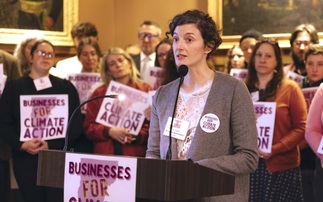A new report shows changes in the use of coal will be critical to success in tackling climate change
Existing government pledges to curb carbon emissions can put the world on a path to keeping global warming below 2C, an international research project has concluded.
But countries will benefit from accelerating their low-carbon programmes well before 2030, the target date for most of the current emissions pledges - otherwise drastic cuts will be needed afterwards.
The conclusions of the MILES project, led by the prestigious French sustainable development think-tank IDDRI and funded by the European Union, were this week unveiled on the sidelines of UN climate talks in Bonn - the final preparatory session before December's pivotal summit in Paris.
Although all governments have endorsed the 2C target, current pledges - Intended Nationally Determined Contributions or INDCs in UN climate convention jargon - would not cut emissions rapidly enough to get there. This much has been acknowledged for many months.
But Teresa Ribera, project leader and IDDRI director, suggested this is the wrong criterion by which to judge success or failure in the Paris talks. The MILES analysis, she said, shows governments can still meet the target if they subsequently ramp up their carbon-cutting ambitions.
"The criteria for judging INDCs is their capacity to unleash the deep decarbonisation of the energy sector by 2050," she said.
"This report's analysis shows that this transformation is emerging but not fast or deep enough. Future policies and targets must be defined to be coherent with deep decarbonisation by 2050, informed by concrete pathways to get there."
Useful snapshot
The report looks at five key countries and one key region - Brazil, China, Japan, India, the US and the European Union. As they collectively account for nearly two-thirds of global greenhouse gas emissions and span different stages of economic development, they represent a useful snapshot of the world as it is.
The researchers constructed three different scenarios. In one, countries implement their INDCs, which take us to 2030.
In the second, they then accelerate policies after 2030 in order that emissions are compliant with the 2C goal by 2050, which involves an abrupt change of pace: after 2030, decarbonisation at about four per cent each year is needed, which is higher than has ever been achieved before in the absence of war or serious economic contraction.
In the third scenario, governments progressively increase their rate of decarbonisation so as to exceed their INDC ambitions by 2030, which means a gentler acceleration afterwards and a less bumpy landing, with a decarbonisation rate below three per cent each year needed.
The analysis throws up some commonalities and differences between the national plans. One interesting conclusion is sectoral: "The INDCs will accelerate and consolidate a significant transition in the electricity sector and in energy efficiency in the next 15 years, driving innovation and reduced costs."
However, progress in other sectors such as transport wouldn't be accelerated much by the INDCs themselves. By contrast, expansion of electricity into transport, or other technologies such as biofuels, would be needed for the "great acceleration" after 2030.
A key difference between the "INDCs-only" scenario and "easy route to 2C" is in coal, with use needing to roughly halve by 2030 in the latter case. Investments in low-carbon electricity are almost 50 per cent higher in the more ambitious scenario.
Umbilical links
IDDRI is umbilically connected to the UN process leading to the Paris summit. Its founder, Laurence Tubiana, is the French Foreign Ministry's Special Representative for the Paris process, and the government is drawing on its expertise and contacts in the preparatory phase.
And the report has been conceived in a way that feeds in neatly to key components of the negotiations that are now taking place in Bonn and which will transfer to Paris in just over a month's time.
The particular area of interest is the review mechanism. It's generally agreed that as the INDCs aren't enough to meet the 2C target, and as societies and technologies are changing rapidly in any case, the INDCs should be reviewed and updated regularly.
But how often? The consensus seems to be centering on every five years; but the draft text contains different options that governments are even now trying to resolve.
How rigorous and negotiated will the review and upwards-ratcheting procedure be? Should the mechanism be the same for developed and developing countries? Some bits of draft text suggest it could be a continuous process, rather than having set intervals.
The IDDRI report suggests that logically it ought to happen as often as reasonably practical, for countries in all stages of development - helping them all to steer the world below the 2C ceiling, with the minimum disruption possible.
Richard Black is director of the Energy & Climate Intelligence Unit and a former BBC Environment Correspondent
This article is part of BusinessGreen's Road to Paris hub, hosted in association with PwC







